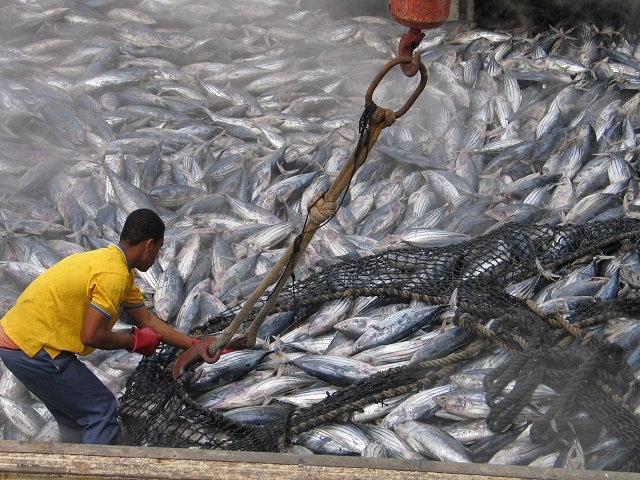Seychelles' EEZ: Yellowfin tuna catch quota not reached in 2023

Lucas described 2023 as an odd year for fishing given that the effect was felt across various sectors. (Joe Laurence, Seychelles News Agency)
The Seychelles Fisheries Authority (SFA) confirmed that the general quota for yellowfin tuna catch was not reached for the year 2023 after compiling all the information received from active vessels last year.
The head of the Department for Fisheries Resource Management and Technical Coordination at SFA, Vincent Lucas, told SNA that a quota of 37,782 tonnes was allocated to Seychelles for 2023. Only 34,028 tonnes were consumed by the various fleets, which include purse seine, industrial and semi-industrial longline fishers, making Seychelles short by 3,704 tonnes.
This includes the 13 Seychelles-flagged purse seiners and industrial longliners and semi-industrial longliners.
"The purse seine fleet is allocated a higher proportion of the quota with an average of 2,500 tonnes per vessel totaling 32,500 tonnes. Out of the 13 purse seiners, only six managed to consume all of their allocated quota for 2023," he added.
Lucas described 2023 as an odd year for fishing given that the effect was felt across various sectors. He explained that temperature changes in the ocean determine where the tuna schools are located. The El Nino effect and other natural phenomena caused the tuna to go deeper in the ocean.
"Purse seine fishing operations rely on tuna schools located near the surface of the water. They also rely on a shallow thermocline, a layer in a body of water where the temperature changes rapidly with depth, which prevents tuna schools from diving deep. The El Nino effect, coupled with high sea surface temperatures in the Indian Ocean, resulted in a deeper thermocline. This effect was particularly prominent in the western Indian Ocean where Seychelles is located. Consequently, tuna schools were deeper and could not be detected by the purse seine fleet which relied on schools near the surface. Catchability in the western Indian Ocean was therefore low," Lucas explained.
He mentioned that such an occurrence is not unheard of, however, its intensity varies whenever it happens depending on different factors, and similar situations were reported in 1998, 2008, 2016, 2020, and now in 2023.
"However, across the years the intensity varies. The highest intensity was felt in 1998, when many purse seine vessels moved over to the eastern part of the Indian Ocean, resulting in reduced catch in Seychelles' EEZ (Exclusive Economic Zone) and reduced revenue for the country. Although to a lesser extent, a 40 percent reduction in catches in Seychelles' EEZ was reported in 2023. It should, however, be noted that 2022 was an exceptional year in terms of tuna catches in Seychelles' EEZ, whereby we recorded a 170 percent increase over 2021," said Lucas.
On the status of the fishing operations so far, he said that while it is still a bit early to confirm, there has been a noted improvement but in the first quarter of 2024, the impact of elevated sea surface temperature was still evident.
"However, the situation has gradually improved and we are noticing an increase in catches in quarter 2 and even greater improvement during quarter 3. It is still a bit early to say whether the 2024 quota will be met, however, the improvement is very promising," said Lucas.
Fishing is the second top contributor to the economy of Seychelles, an archipelago in the western Indian Ocean.





